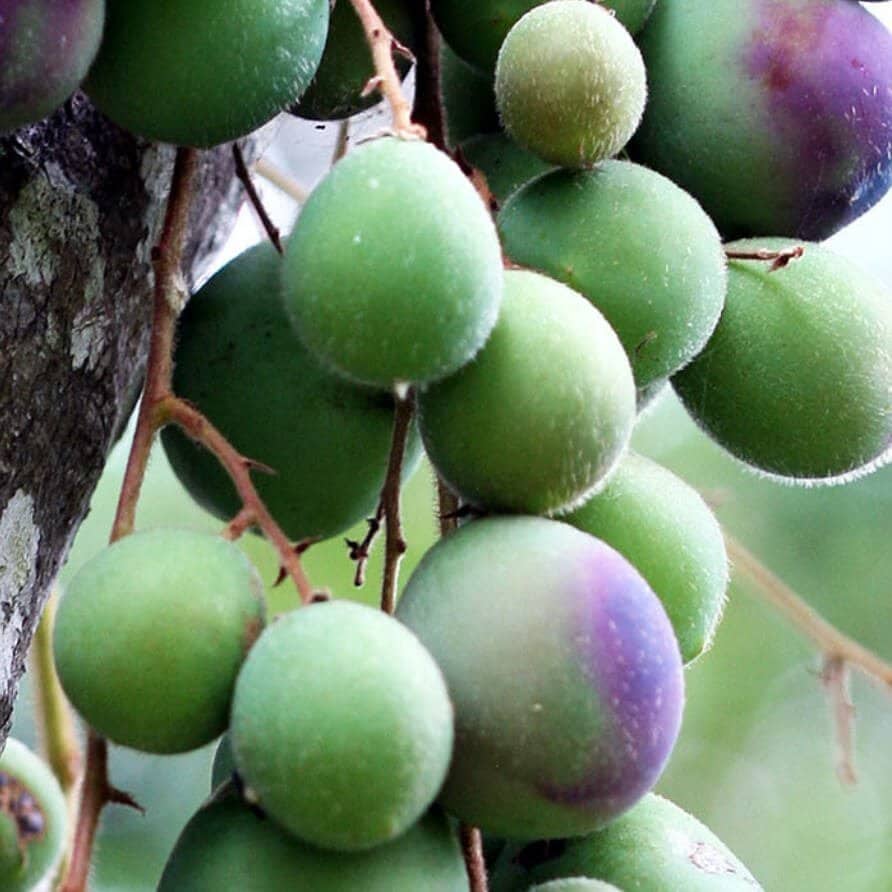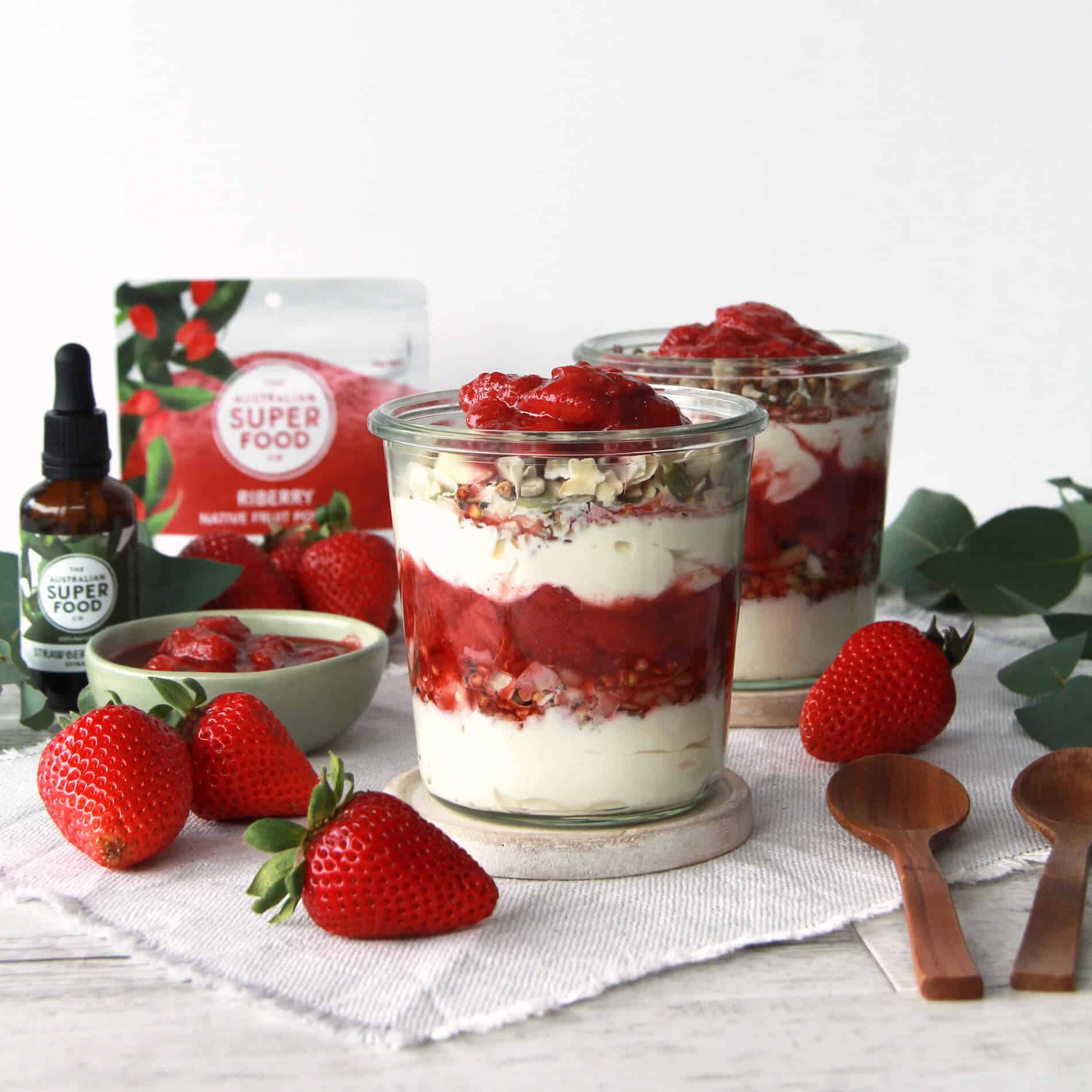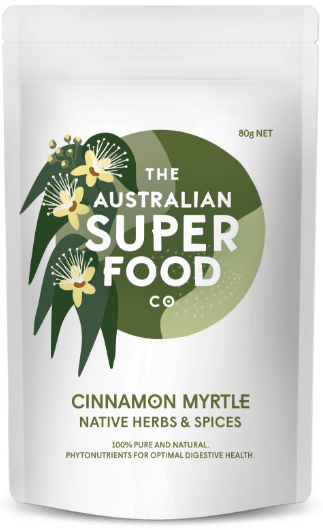The cinnamon myrtle (also known as Carrol, Grey Myrtle, Ironwood, Neverbreak, Australian Lancewood) is found in the tropical rainforests of Queensland and New South Wales.
Cinnamon myrtle is from a small tree whose leaves have a spicy, cinnamon-like fragrance.
Both Indigenous Australians and early settlers used its leaves for cooking and for medicinal purposes, and the tree’s wood for tools.
Download The Australian Superfood Co provenance map here.
Flavour:
This native spice has a subtle, spicy, cinnamon-like flavour.
Palate:
Initial earthy, wood like taste on the tongue and front palate, that slowly builds and develops into a subtle, spicy, cinnamon-like flavour. The flavour and aroma continues to develop when applied to heat, through baking, stir-frying, sautéing and boiling.
Aroma:
Woody, cinnamon-like aroma.
Cinnamon myrtle can be used to impart a pleasant and subtle flavour in many savoury recipes, including curries, casseroles and slow-cooked, one-pot and tagine-style dishes. Add to steamed rice and other rice dishes.
It complements desserts, confectionary, ice cream and almost any recipe using cream and chocolate. Cinnamon myrtle can also be used in baked goods such as biscuits, bread, cakes, muffins and slices – really anywhere cinnamon would typically be used!
Mix cinnamon myrtle with lemon myrtle and fresh chilli and add to breadcrumb mix, or combine coarsely crushed cinnamon myrtle with sea salt and sprinkle over lamb before roasting. Or use it to enhance the flavour of roasted root vegetables – sweet potato, pumpkin, beetroot, carrot, turnip, parsnip. It’s also delicious sprinkled over sweet corn with a little butter.
Cinnamon myrtle pairs well with dairy (yoghurt, most cheese varieties, cream, ice cream), oil and vinegar-based marinades and salad dressings, meat-based jus, and egg-based condiments. Try mixing a little finely ground cinnamon myrtle through some homemade garlic aioli, béchamel or hollandaise sauce.
It complements white fish, chicken, pork, lamb and other red meat (game meat such as kangaroo) Use it in marinades, dressing, sauces and jus.
Cinnamon myrtle makes for a perfect brewed tea, and subtly lifts the profile of alcoholic beverages such as gin, vodka, white rum, Cointreau and possibly tequila. Add a little to soda and tonic water with fresh lime, or allow it to infuse for a few hours or overnight; it makes for a thirst-quenching, refreshing drink.
Click here for delicious Cinnamon Myrtle recipes.










